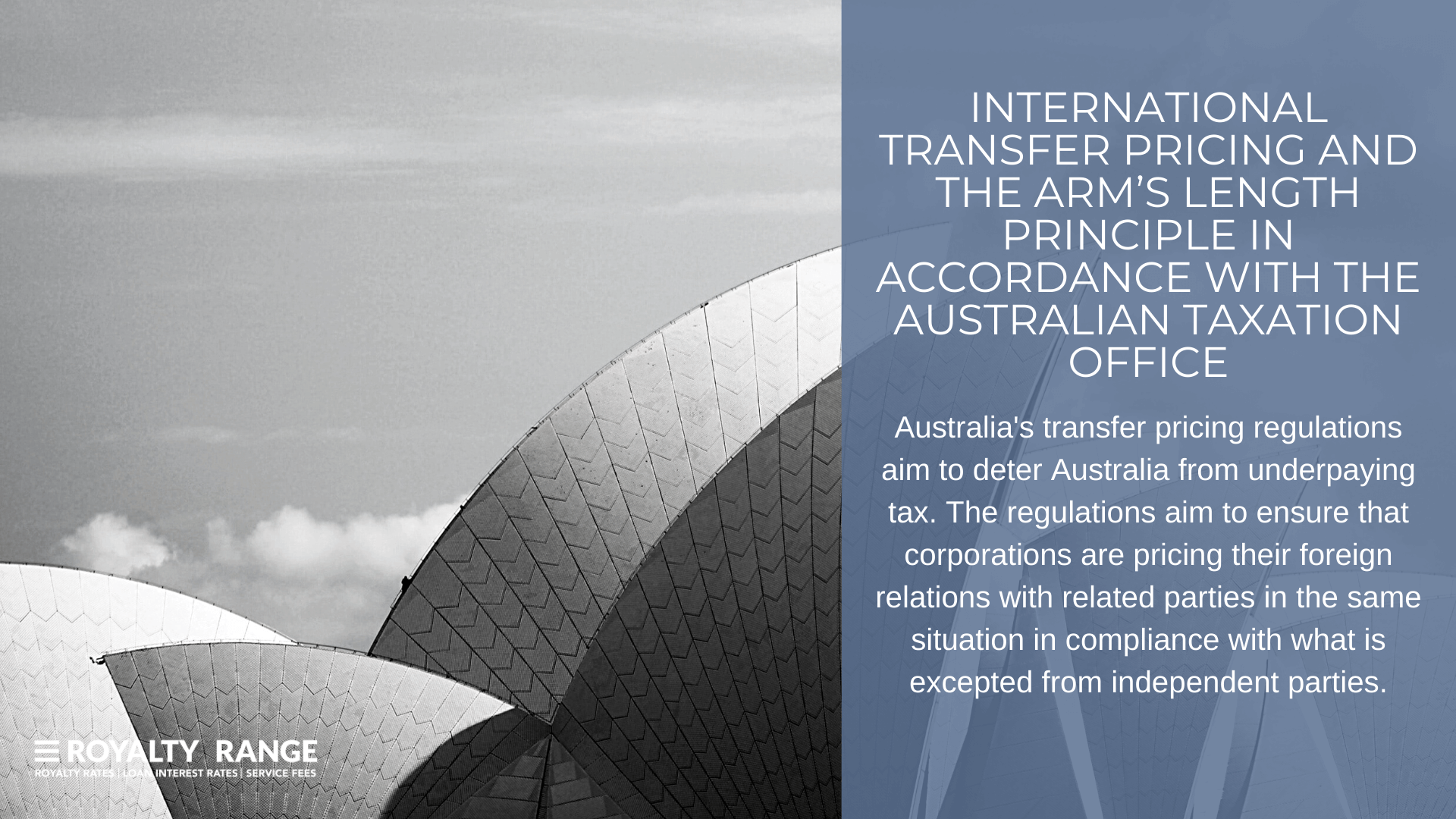International transfer pricing and the arm’s length principle in accordance with the Australian Taxation Office
RoyaltyRange

Transfer Pricing in Australia
Australia’s transfer pricing rules seek to prevent the underpayment of tax in Australia. The rules aim to make sure that businesses price their related-party international dealings in accordance with what is excepted from independent parties in the same situation.
As a result, Australia’s double-tax agreements and domestic law require that pricing of goods and services and allocation of income and expenses between related parties comply with the arm’s length principle.
What is the arm’s length principle?
The arm’s length principle uses the behaviour of independent parties as a guide or benchmark to determine in international dealings between related parties:
- The pricing of goods and services, and
- How income and expenses are allocated.
It involves comparing what a business has done and what an independent party would have done in the same or similar circumstance. This principle is supported by all Organization for Economic Co-operation and Development (OECD) countries.
Application of the arm’s length principle
In assessing compliance with the arm’s length principle, commercial judgement should be exercised about the nature and extent of documentation appropriate to your given circumstances. Furthermore, both the ATO and the OECD state that businesses only need to reasonably assess whether their dealings with related parties comply with the arm’s length principle.
How to assess and find the arm’s length principle?
As businesses risk having a transfer pricing audit if they do not have proper processes to determine the arm’s length principle and cannot demonstrate to the ATO the methods they have used to determine their prices. Therefore, it is imperative that proper processes are used to determine the arm’s length principle.
Enter the Royalty Range Benchmarking tool
The brand-new Royalty Range Benchmarking tool provides you with a detailed comparison of publicly available data, such as royalty rates, service fees and interest rates that helps you determine an arm’s length (market) remuneration range for your specific products, services and transaction types. This data, which is all compiled based on OECD BEPS guidance on intangibles allows you to set reasonable rates and fees, prepare transfer pricing documentation, negotiate license agreements and much more.
How does the Benchmarking tool work?
The benchmarking tool allows you to undertake a:
- Quantitative screening: an initial search to prepare a list of potentially comparable reports.
- Qualitative screening: reviewing the sample and selecting a final set of reports based on your specific criteria.
- Financial analysis: calculating the range of rates of fees for third-party agreements, including interquartile and median arm’s length rates.
The final set of reports will consist only of those agreements that have the most comparable terms. These agreements are all manually analyzed and are then used to conduct a Comparable Uncontrolled Price (CUP) analysis to calculate a rate or fee that complies with the arm’s length principle and proper methods in accordance with the ATO.